Summer truffle
A complete guide to this amazing and surprising product of nature
It is the easiest fresh truffle species to find, because it is more abundant, and therefore of lesser value. With a long harvest period, the summer truffle is the most widespread not only in Europe, but also in the rest of the world.

Tuber Aestivum Vitt.
The characteristics of the summer truffle or scorzone
The characteristics of the summer truffle, scientifically known as Tuber Aestivum Vitt., were first described in 1831 by Carlo Vittadini, an eminent Italian mycologist, botanist and writer who classified this species.
The scientific name reflects both the summer harvest period (“Aestivum”) and the homage to its discoverer (“Vitt.”). This hypogeal mushroom is distinguished by its black peridium with prominent polygonal warts, 3 to 5 millimeters wide, which give the external surface a robust and characteristic texture. The gleba, or internal part, has a hazelnut or light brown color, crossed by an intricate network of white veins, with a firm but slightly elastic consistency when cut.
The size of Tuber Aestivum varies considerably, with diameters ranging from 2 to 10 centimetres and weights ranging from 30 to 300 grams, although exceptional specimens weighing up to 1 kilogram have been found.
From an organoleptic point of view, the summer truffle is characterised by a moderately intense aroma that recalls the aroma of porcini mushrooms, enriched by notes of hazelnut and undergrowth, with an intensity that increases with maturation.
The flavor is delicate but distinctive, with hints of hazelnut and a light hint of garlic, leaving a pleasant and non-invasive aftertaste. This truffle prefers calcareous and well-drained soils, forming mycorrhizal symbiosis mainly with oaks, hazelnuts, hornbeams and lime trees.
Buy Summer Truffle
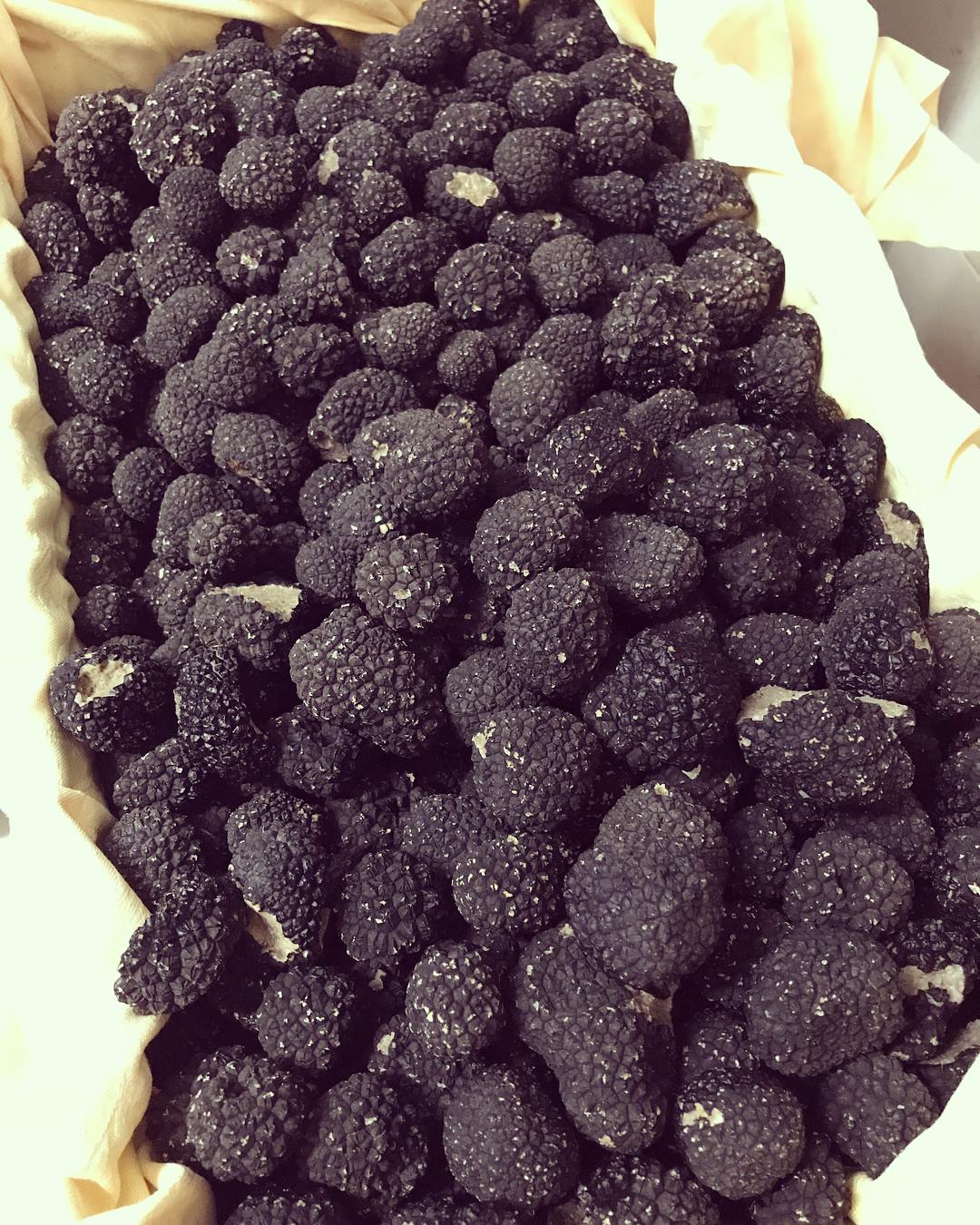
How to preserve summer truffle
The preservation of summer truffles requires attention and care to best preserve their precious organoleptic characteristics. The most effective and widely adopted method consists in delicately covering the truffle with absorbent kitchen paper, preferably unbleached to avoid chemical contamination, and then placing it in an airtight glass or food-grade plastic container.
This container should then be placed in the vegetable section of the refrigerator, where the temperature remains constant between 2 and 4 degrees, ideal for slowing down the ripening process without compromising the aroma.
It is essential to change the paper daily, an operation that not only prevents the formation of potentially harmful mold, but also allows you to monitor the state of conservation of the truffle. This daily practice allows you to remove excess moisture that could accelerate deterioration and offers the opportunity to visually inspect the truffle for any signs of alteration.
By scrupulously following this method, the summer truffle can maintain its freshness and its organoleptic qualities for a period ranging from 6 to 7 days, sometimes extending up to 10 days for particularly fresh and well-preserved specimens.
-
How to clean summer truffles
Cleaning the summer truffle is a delicate operation that requires attention and care to preserve the precious organoleptic characteristics of this hypogeal fungus intact. The process begins by immersing the truffle in a bowl of cold water for about ten minutes, a step that serves to delicately soften the layer of soil and debris that adheres to the warty surface. It is important to use cold water, as higher temperatures could alter the structure and aroma of the truffle.
After soaking, proceed to the actual cleaning under a gentle jet of cold running water, using a soft-bristled brush or a specific brush for truffles. The movements must be delicate and circular, paying particular attention to the cavities between the warts where residues of soil could nest.
It is essential to avoid applying excessive pressure so as not to damage the precious external surface of the truffle, on which its characteristic aroma depends. During this phase, it is advisable to carefully inspect the truffle to identify and remove any damaged or moldy parts, using a small sharp knife if necessary.
Once cleaning is complete, the truffle must be dried with extreme care using a clean, soft cloth or absorbent paper, gently dabbing the surface to eliminate excess water without rubbing. -
How to cook summer truffle
The summer truffle, with its delicate and versatile aroma, offers a wide range of culinary possibilities that range from traditional cuisine to the most innovative interpretations of contemporary gastronomy.
This prized mushroom lends itself to enhancing a surprising variety of dishes, demonstrating a particular affinity with fish-based preparations, where its earthy fragrance marries magnificently with the delicate flavours of seafood and white fish.
Eggs are another classic and always popular combination, with truffle enhancing the creaminess of omelettes, fried or soft-boiled eggs, creating a particularly pleasant contrast of flavours and consistencies.
In first courses, summer truffle finds many applications: it can be finely sliced on creamy risotto, used in fillings for fresh pasta, or grated on tagliatelle with butter, where the heat of the freshly drained pasta releases its aroma, intensifying the taste experience.
Eating it raw is often the best choice to fully appreciate its nuances. In this case, the truffle is sliced or grated directly onto the plate at the time of serving, allowing the diner to enjoy the entire aromatic spectrum.
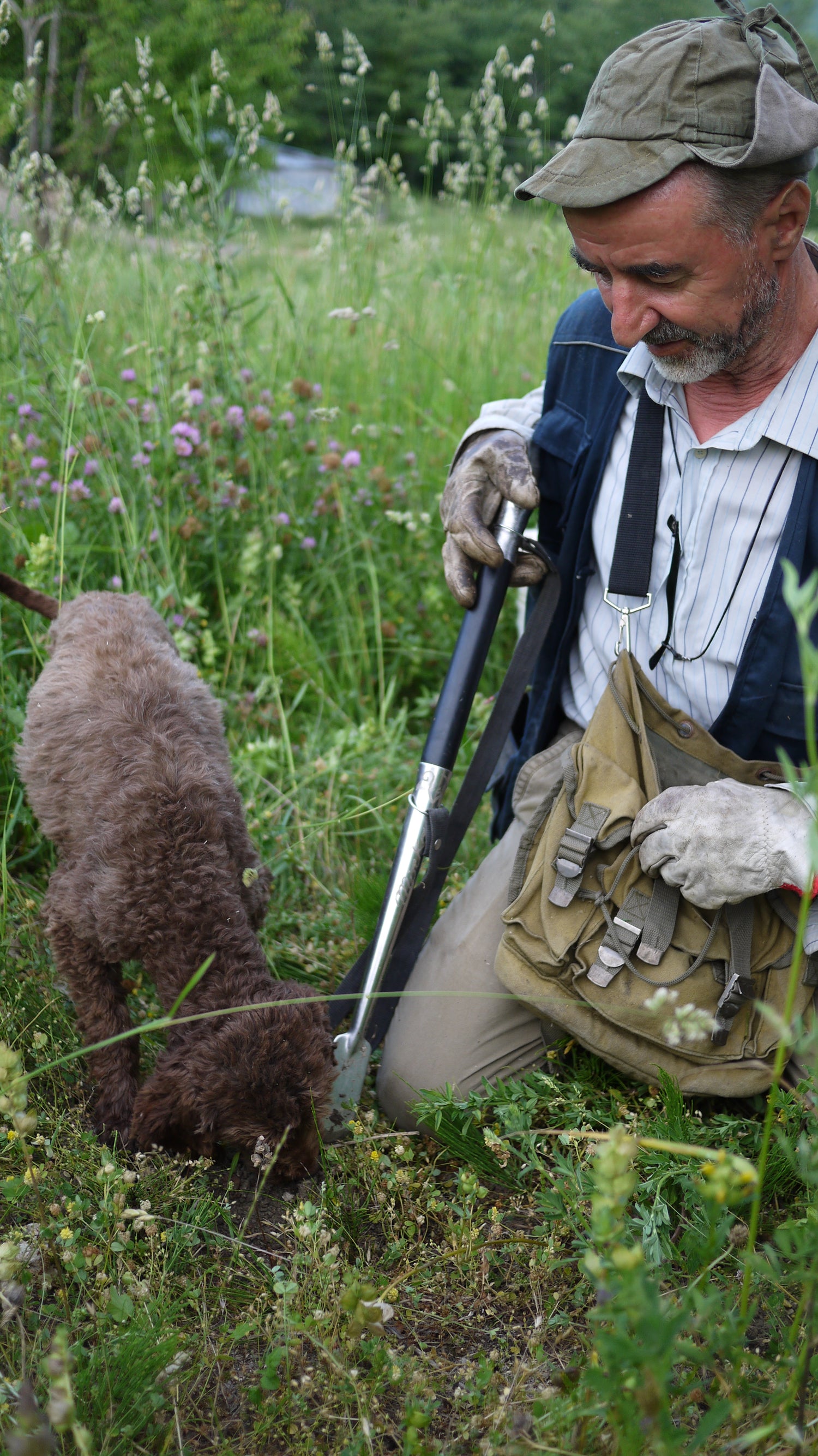
How to harvest scorzone
In the past, summer truffles were hunted with the help of pigs, animals that were very useful in this task. However, pigs had the defect of eating the truffles they found, and so they ended up damaging them: this is why their place was taken by dogs.
Training truffle dogs takes place in the form of a game, with the owner always giving a treat, as a reward, in the form of food. In this way the animals are motivated to find truffles, providing valuable help without which the search would be much more complicated and decidedly less profitable. After the dog has found the place where the truffle is, it begins to dig at the bottom with its paws. At this point the owner extracts the truffle from the ground: he does so as delicately as possible and using a special spade. It is important that the truffle does not break and that the roots that allowed it to grow underground do not break: in this way those roots will be able to give rise to other truffles later.
Buy fresh summer truffle or scorzone
Where and how the Summer Truffle grows
-
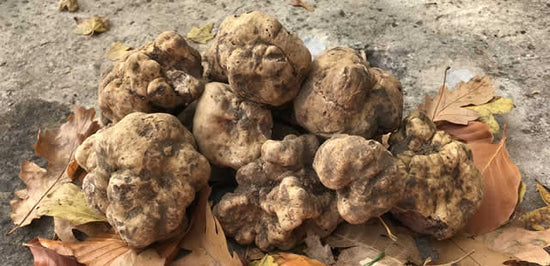
Type of soil
Also known as scorzone, the summer truffle thrives in a specific ecological environment that determines its growth and quality. In particular, it prefers calcareous, well-drained soils rich in organic matter, with a pH that tends to be alkaline, ranging between 7.0 and 8.0. Its geographical distribution is surprisingly wide, extending from the Mediterranean region to southern Scandinavia, with a particularly significant presence in Italy, France, Spain and the countries of Central and Eastern Europe. In Italy, regions such as Abruzzo, Umbria, Marche, Tuscany and Piedmont are renowned for producing high-quality summer truffles.
-
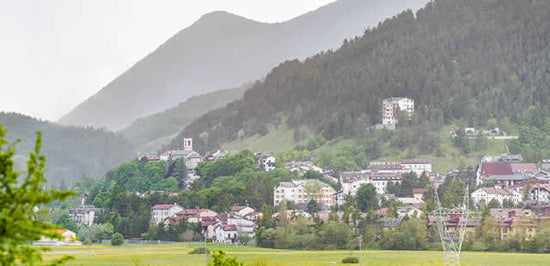
Altitude
The summer truffle grows in various environments: this is why it can be found at altitudes ranging from a minimum of 100 meters to a maximum of 1,200 meters above sea level.
-
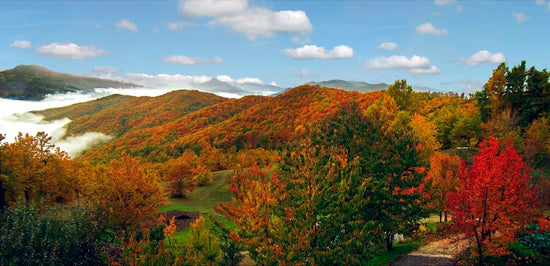
Seasonal period
The growth cycle of the summer truffle is influenced by specific climatic factors: it requires mild winters and hot but not excessively dry summers, with rainfall well distributed throughout the year. The formation of the fruiting bodies generally begins in spring, with the harvest period typically extending from May to September, reaching peak ripeness and aroma between June and August. The growth depth varies from 5 to 30 centimeters below the soil surface, requiring the use of trained dogs to locate them during harvest.
-
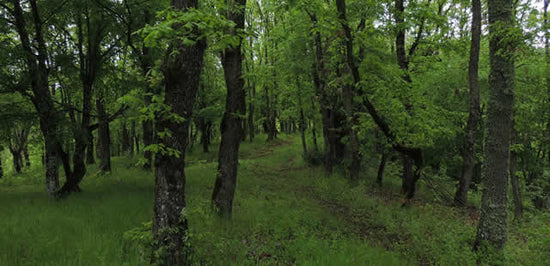
Symbiotic tree species
The ideal habitat for Tuber aestivum is represented by mixed deciduous forests, where it forms mycorrhizal symbioses mainly with oaks (Quercus spp.), hazelnuts (Corylus avellana), hornbeams (Carpinus betulus) and limes (Tilia spp.). This symbiotic relationship is essential for the development of the truffle, which draws nourishment from the roots of the host tree in exchange for an improvement in the absorption of water and minerals for the plant.
-
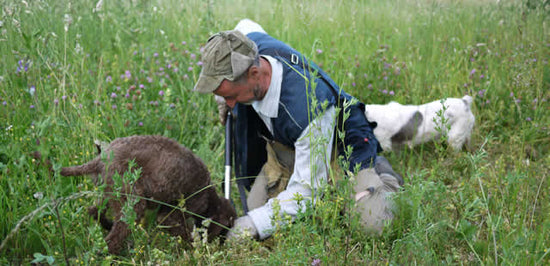
Dogs and equipment
To find the summer truffle, you need dogs that can boast a highly developed sense of smell, to the point of being able to detect the truffle already from the surface of the ground. This is why purebred dogs are preferred, including the cocker spaniel, the pointer, the pointer and the lagotto romagnolo.
-
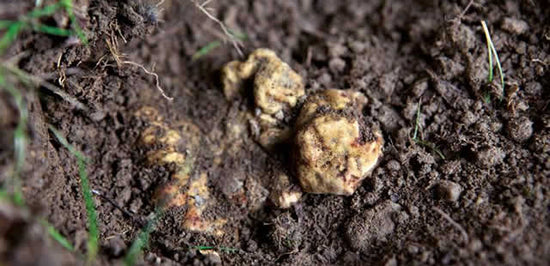
Collection areas
The summer truffle grows in beech forests, oak woods and invasive woodlands. In recent decades, the controlled cultivation of the summer truffle has become increasingly popular, with the creation of artificial truffle grounds that aim to replicate the ideal natural conditions for its growth, contributing to more sustainable production and the conservation of natural habitats.
Discover all our truffle products
Average price of the summer truffle commonly called “Scorzone”
In recent years, the value of summer truffles has shown surprising volatility. Retail prices have fluctuated between 100 and 400 euros per kilogram. This wide range reflects the unpredictable nature of truffle production, subject to the changing moods of the climate and the land. Prices can also undergo significant weekly variations, influenced by the progress of the harvest and fluctuations in demand. This reactivity makes the truffle a sensitive indicator of trends in the luxury food sector , capable of anticipating broader movements in the gastronomic market.
The delicate balance between rain and drought is crucial in the production of summer truffles. A wet winter followed by a drier spring and a summer with moderate rainfall creates ideal conditions for fruiting. However, the irregular climate of recent years has made this balance increasingly precarious, adding an element of uncertainty to the sector's prospects. Climate change, in fact, is altering growth cycles and the quality of crops, making forecasting prices even more complex.
The marketing of summer truffles does not only concern the local market, but also extends internationally, with significant demand coming from gourmet restaurants and specialty food shops around the world.
Truffle auctions, both in person and online, also have an impact on pricing, offering a platform where supply and demand meet in a transparent manner. On these occasions, higher quality truffles, with larger dimensions and more intense aroma, reach significantly higher prices than average.
It should be noted, on the other hand, that investors and truffle growers must be constantly informed about climate conditions and market trends in order to best plan harvesting and sales. The preservation and processing of truffles into long-life products, such as sauces and pates, are effective strategies for stabilizing revenues, reducing dependence on fluctuations in the fresh product market.
Finally, the promotion of summer truffles through culinary events, food fairs and collaborations with renowned chefs contributes to increasing their perceived value and demand. These events, in addition to being an opportunity for direct sales, also represent a moment of consumer education on the peculiarities and uniqueness of summer truffles, strengthening the link between product, territory and culinary tradition.
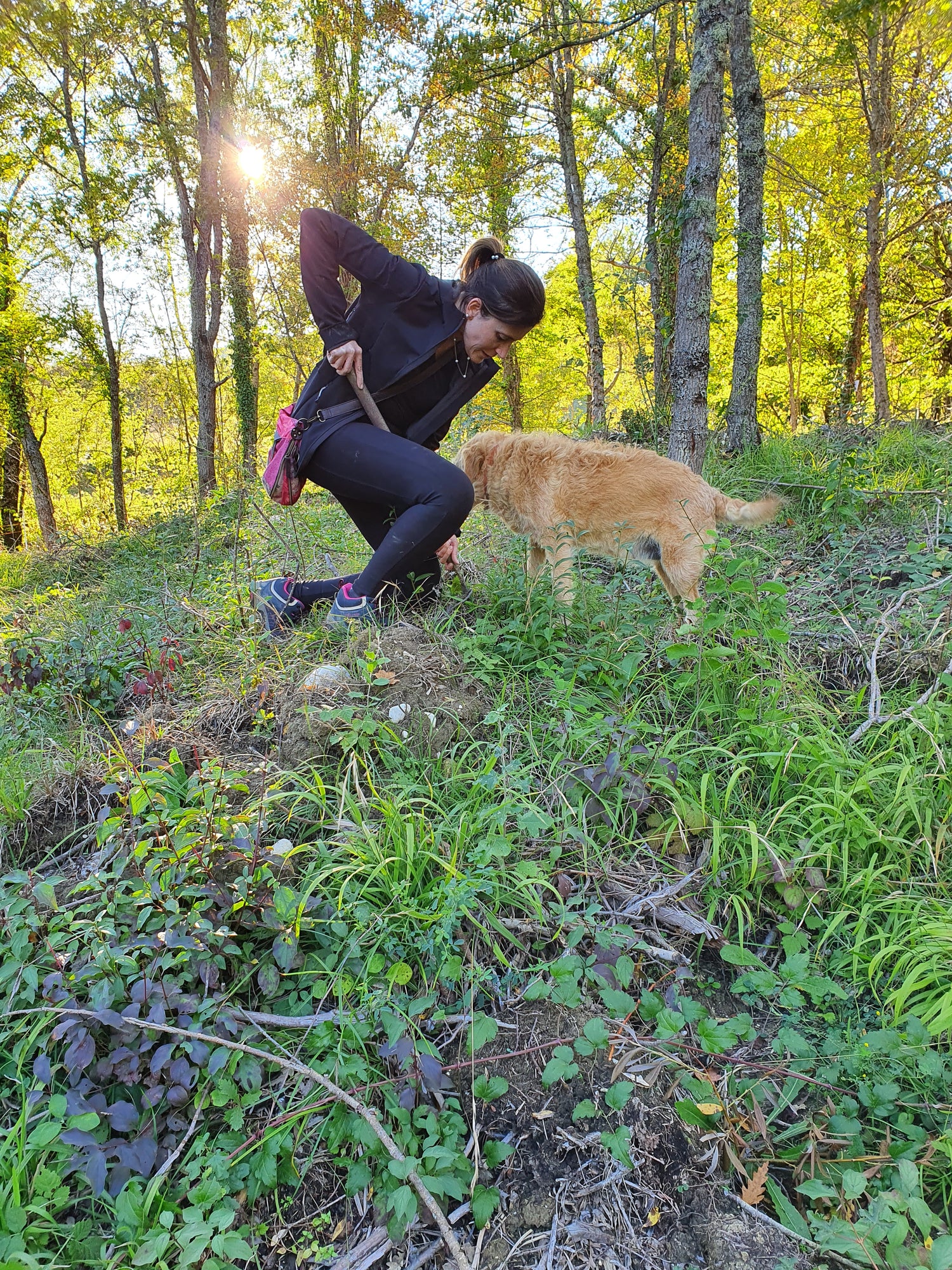
Who we are
Our family history is deeply intertwined with the woods that line the Sangro River, on the border between Abruzzo and Molise. For generations, we have dedicated ourselves to the cultivation, harvesting and processing of truffles, preserving a heritage of knowledge passed down from father to son.
Our relationship with the territory is manifested through eco-sustainable practices and a philosophy rooted in respect for the environment. We favor the short supply chain, enhancing local resources and minimizing the environmental impact of our activities. This choice ensures the freshness and authenticity of our products, while contributing to the conservation of the unique ecosystem that hosts our precious truffles.
The entire family is involved in every phase of the production process: from the management of the truffle grounds to the manual harvesting, up to the creation of preserves and gastronomic specialties. This generational continuity has allowed us to perfect techniques and knowledge, giving life to excellent products that embody the best of the Italian culinary tradition.
The woods of the Sangro Valley , with their delicate ecological balance, are the true protagonists of our story. These pristine habitats , generous with superior quality truffles, represent for us not only a resource to be used wisely, but a treasure to be preserved and passed on to future generations.
Our offer includes fresh truffles, collected and selected according to rigorous quality criteria, as well as a range of elaborate products such as preserves, sauces and traditional specialties. Each creation is the result of recipes refined over time, enriched by the experience accumulated in decades of dedication to the world of truffles.
Our mission is clear: we want to continue to be custodians of this precious tradition, adapting to changes without losing sight of the fundamental values that guide us. We aim to create a business model that demonstrates how it is possible to combine economic success and environmental responsibility, inspired by the principles of the circular economy.







